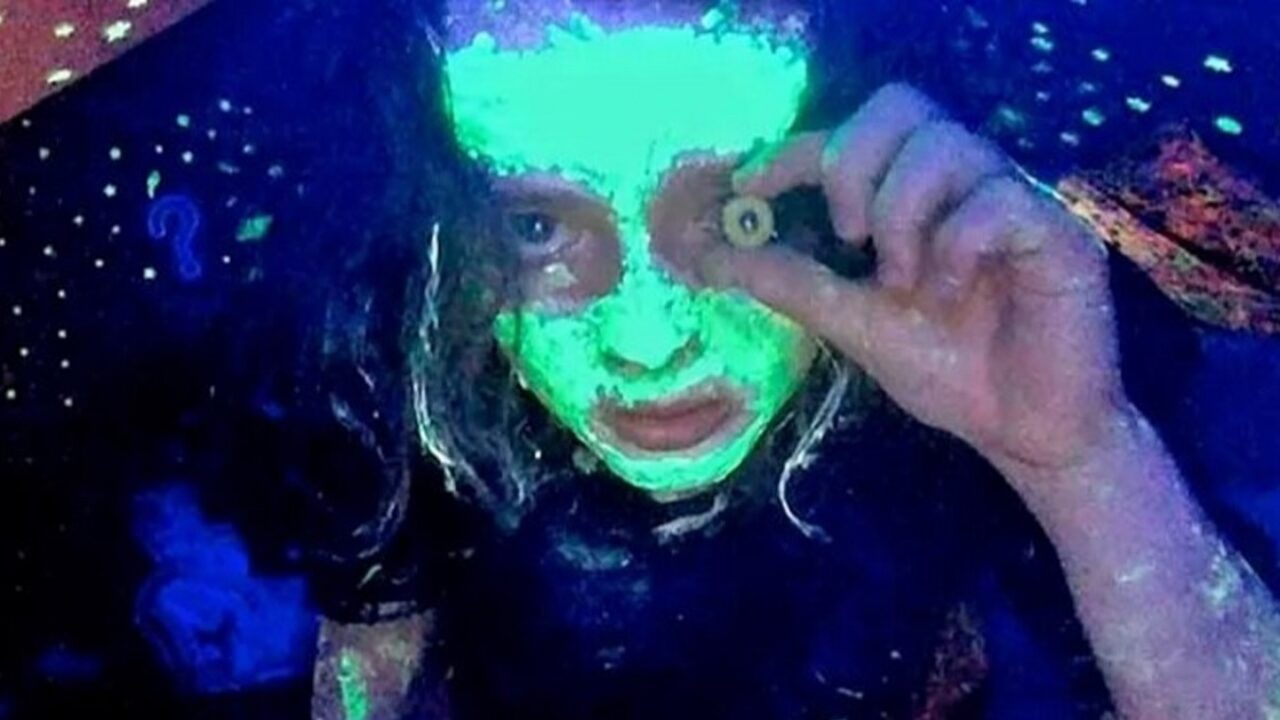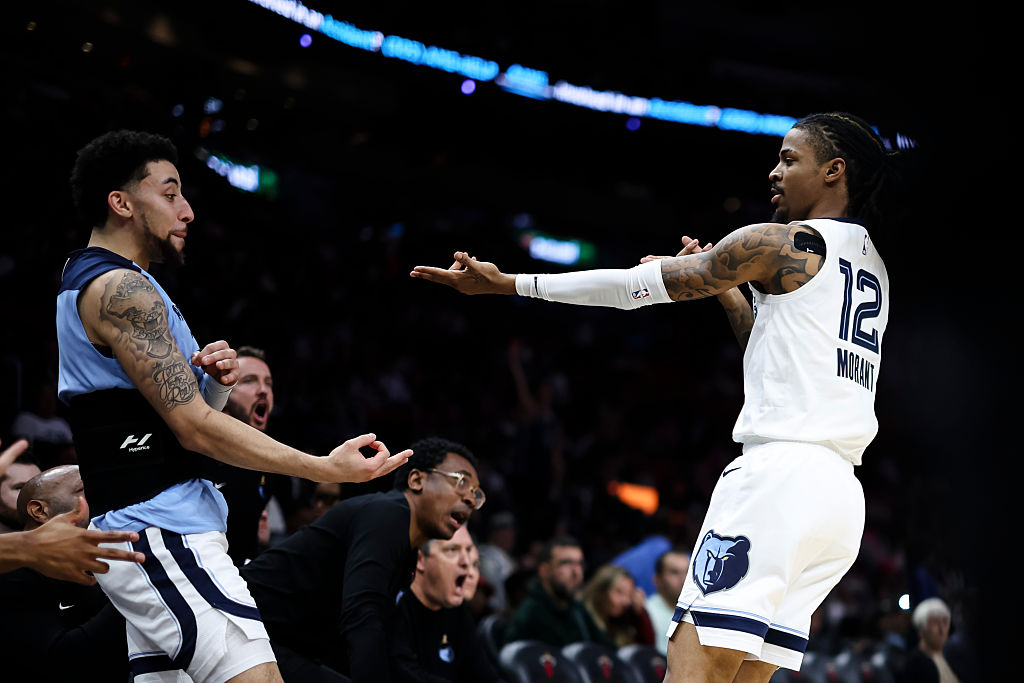We’re All Going To The World’s Fair is being marketed like a horror film, and if you come across this movie its branding and threateningly ambiguous title will likely make you think it is one. But it’s probably better for your expectations if you approach it as, like director Jane Schoenbrun says, “a movie about someone who loves horror.” There are no jump scares, screechy music cues, blood and gore, or any of those maximalist elements that define most standard horror experiences. If you’re looking for that, you’ll likely come away disappointed. But viewers of this buzzy indie film might come away haunted, just the same, by the dangers that lurk within it.
Schoenbrun has traced the beginning of this film to the 2014 “Slenderman Stabbing” in suburban Milwaukee, in which a pair of 12-year-old girls attacked a friend because they said they believed the meme horror character Slenderman would kill their families if they didn’t. This statement from the local police chief in the midst of the moral panic this violence caused aptly describes the motivating anxiety underneath World’s Fair:
"The Internet has changed the way we live. It is full of information and wonderful sites that teach and entertain. The Internet can also be full of dark and wicked things."
Casey, the film’s lead character played by newcomer Anna Cobb, actively seeks out that darkness and wickedness. The film begins with the high schooler, talking to a webcam in her bedroom, announcing that she’s going to take “The World’s Fair Challenge.” This involves saying “I want to go to the World’s Fair” three times, drawing blood from a finger, and watching a flashing video online. As Casey waits for “symptoms” from this challenge to manifest, we see through her eyes as she watches videos of other people who have taken the challenge, and who have documented disturbing and unnatural changes in their minds and bodies. While it gradually becomes clear to the viewer that this is a creepypasta-like community, in which people use horror mythology as a backbone for their artistic hobbies, it’s less clear if Casey herself understands the nature of what she’s participating in. As the film progresses, her videos get more and more intense: she dances robotically to a pop song and starts to scream madly in the middle of it; she smears glow-in-the-dark lotion on her face and destroys her childhood stuffed lemur before leaving the room and returning shocked and horrified, with no apparent memory of what she’s done; she mumbles threats of violence against herself and others while wandering a busy street on New Year’s Eve. Are we watching a theater kid’s inspired performance art? Or a true unraveling?
Casey’s a loner, to the extent that the viewer never sees her with another person—her father appears once, as an angry off-screen voice. She’s not a particularly known figure online, either, with her videos only getting at most a few hundred views. And though much of her life is left outside the frame, we’re shown more than enough to question her mental well-being. Cobb plays Casey with the familiar precociousness a kid possesses when they’ve seen a bunch of movies and want to emulate them, mixed with the awkwardness of a still-developing person. She has many standout scenes, but perhaps the most harrowing comes early on, after Casey has taken the challenge, when she describes why she did it. Not only has she always loved horror movies and wants to be in one, she says, but she hopes to recapture a feeling she had when she was younger and used to sleepwalk—this feeling of being able to see your body from a distance, like on a TV across the room, but not be able to control it, even to move out of the way of a car in the road.
It’s important to note here that Schoenbrun is trans, and Casey’s monologue stands out quite distinctly as a description of possible dysphoria. In fact the entirety of the movie, to me at least, echoes what is at least anecdotally a common experience for young trans people of a certain generation, from before they fully understood themselves. It stems from that hard-to-verbalize feeling that something about your life is a little wrong, and needs to change. The internet beckons as a universe through which you can remake yourself or find yourself or lose yourself, with endless paths leading to something else, perhaps something you've been craving without being able to name. That’s why Casey takes the challenge.
But the inherent freedom of the internet is also a danger, as every step carries the threat that you can go too deep, at too young an age. (Sites like Youtube have practically made this their business model.) For Casey, that threat is personified by a lonely man in his 50s named JLB, played by Michael J. Rogers, into whose perspective the film sometimes teleports. We’re first introduced to him one night when Casey, who can’t sleep, unlocks her father’s shed, examines a gun he owns, and then lays down while watching an ASMR sleep video projected onto the wall. When that video ends, another one autoplays, showing a classic horror-movie message made by JLB warning Casey she’s in danger. He and Casey then videochat with each other, his face hidden to her, where he knowingly plays the role of supernatural expert to further Casey’s experience with the challenge and within the community. He presses her to keep making videos “so I know you’re OK.” If an older man initiating contact with a high school girl isn’t creepy enough in its implications, then a later shot of JLB watching Casey’s dance video with his pants around his ankles on the toilet hammers home that the threat here is something realer and more familiar than any kind of demonic possession.
Without giving too much away, the film’s climax is invigorating because of how much it leaves ambiguous, and I'm left questioning who is or isn’t telling the truth. But more personally, I'm terrified by the mirror held up by Casey's arc, reflecting my experience and that of so, so many others, who reached privately from our bedrooms out to the rest of the world, crossing in our search for answers those dark and wicked things. I'm thinking about how my early encounters with transness were sexualized, and therefore pathologized, building more unhappiness and shame instead of brokering understanding. You can find the good communities if you know where to look, but at that age you don't know where to look. The path of least resistance, paved by the JLBs of the world, is to see yourself as a fetish, as a vessel for someone else's fantasies, before seeing yourself as a person.
I believed for a while that things had gotten better since I was a kid, but it's easy to imagine how bad things will get if people keep trying to legislate trans kids out of the real world, pushing them further online, where they think they can actually manage to exist. When my trans peers and I were young, we recognized the darkness and wickedness for what it was, absorbed it, and then either internalized or ignored it. In some cases, perhaps, we followed the trail for a while but managed to escape before the witch cooked and ate us. But in the scariest and most upsetting of cases, we let it become a warped replacement for reality, and more hours than not when I think about World’s Fair, I believe that’s what happened to Casey. In this movie, and on the internet, there are no horror-movie monsters. What’s actually out there in the darkness is much worse.






